London—This exhibition, Ebika Bya ba Kuchu mu Buganda (Kuchu Clans of Buganda) II, at Stephen Friedman Gallery (June 4 – July 30, 2021) brings together large-scale ceramic works, wooden sculptures, masks and vibrant paintings on paper. Leilah Babirye’s powerful works are a testament to her fiercely intelligent approach to the transformation of found materials. Her oeuvre examines the legacies of British colonialism in Uganda and the traditional clan systems of the kingdom of Buganda, encompassing progressive ideas regarding alternative forms of kinship, community and LGBTQI activism.

The artist fled Uganda in 2015 after being publicly outed in a local newspaper. In 2018, she was granted asylum in the United States with support from the African Services Committee and the New York City Anti-Violence Project.
Central to the exhibition is Babirye’s new series of ceramic works depicting figures that are imposing in scale. Babirye creates the works by coiling and molding the clay by hand, gradually building the shape and height of the sculpture. After the work is fired, Babirye begins in a painterly fashion to splatter, drip and splash the work with glaze using unorthodox methods. Upon witnessing her artistic process, American art critic Jerry Saltz commented, “It is important to break the rules in ceramics more than in almost any other medium, because it is alchemy and of the earth and is belly-magic.”
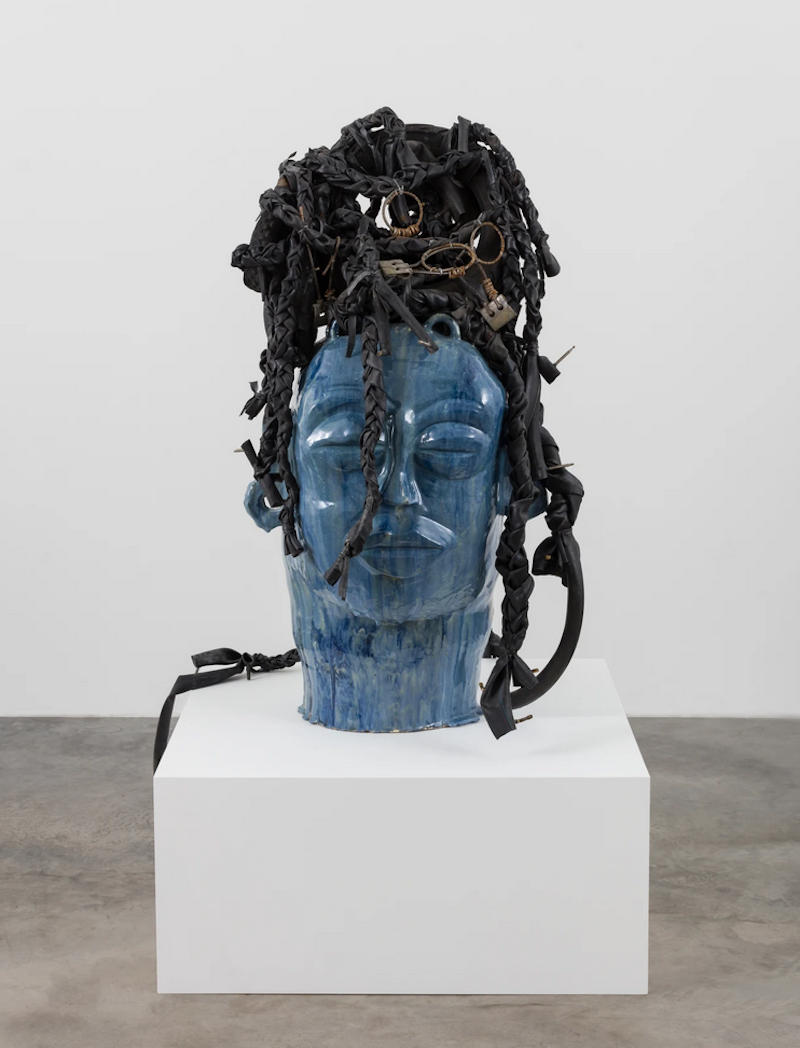
Nansamba II from the Kuchu Ngabi (Antelope) Clan
2021
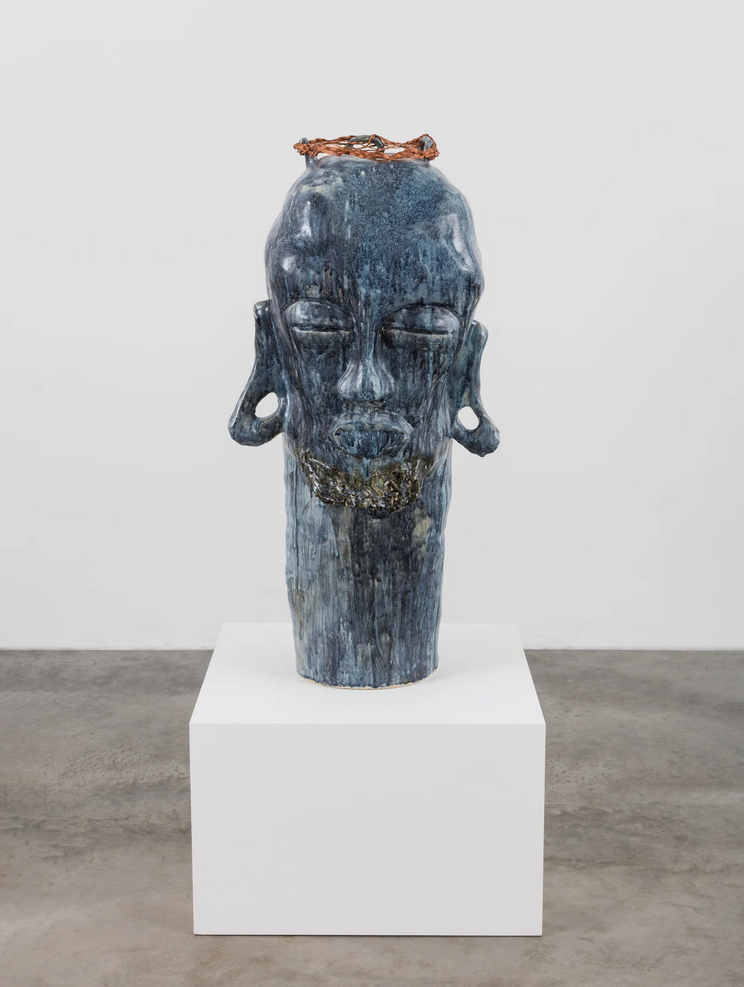
Navvuvuumira from the Kuchu Mbogo (Buffalo) Clan
2021
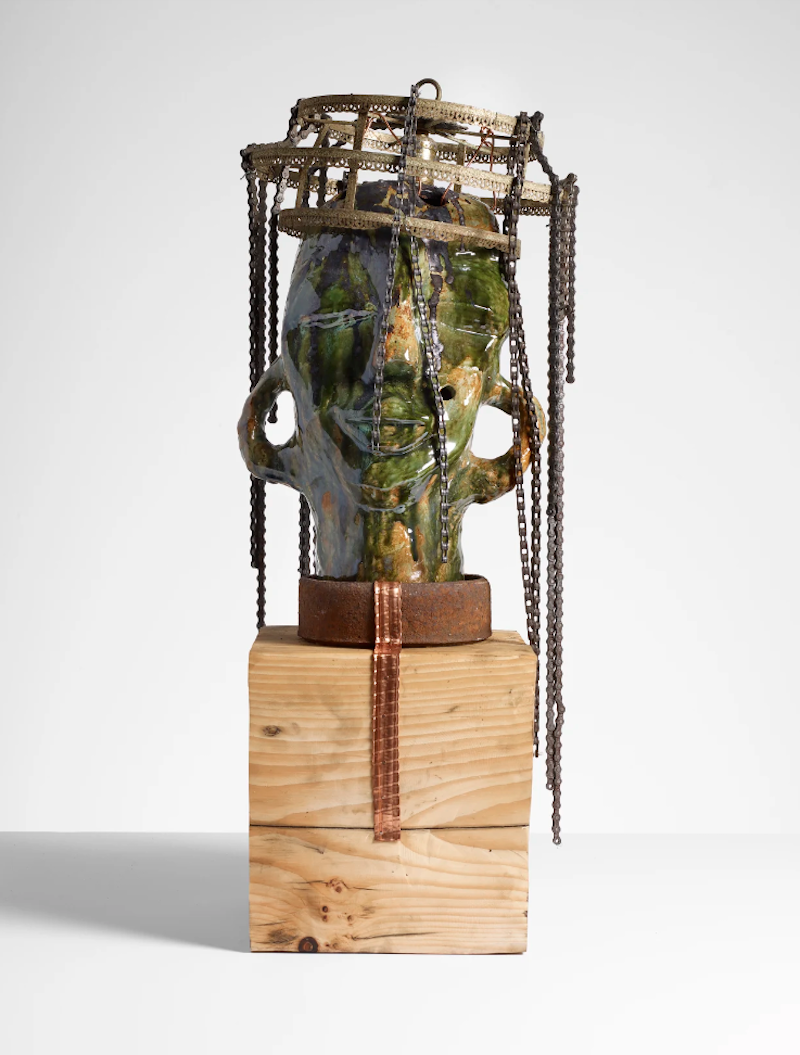
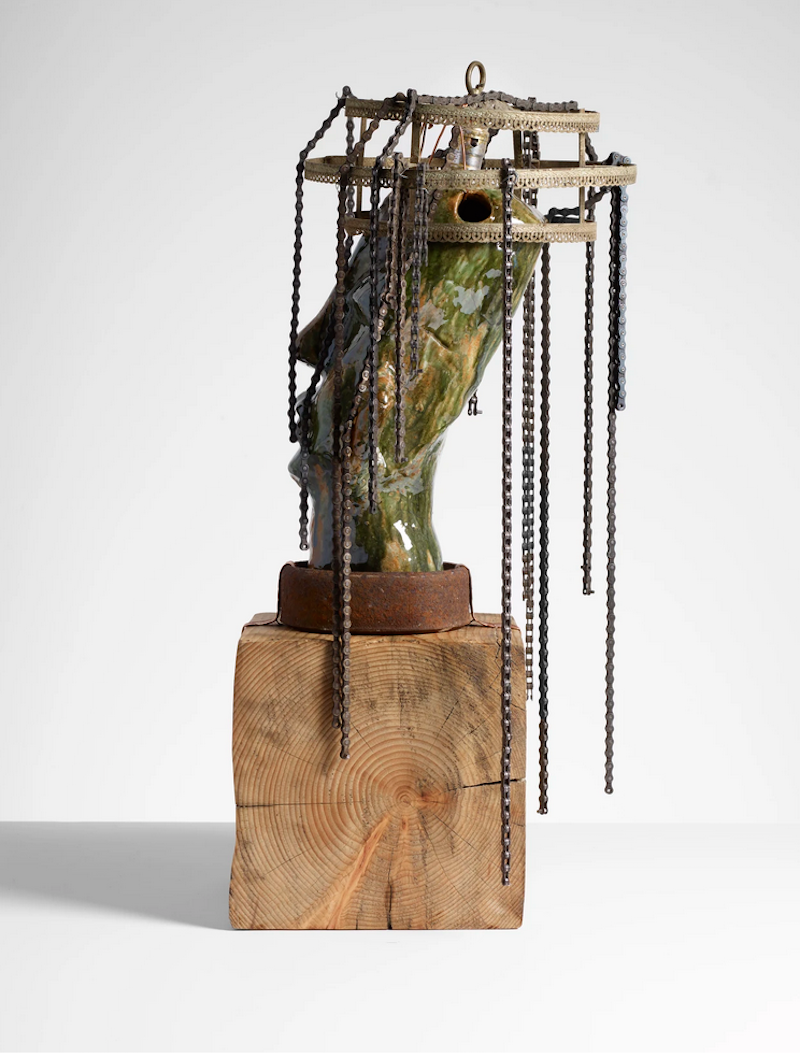
Nakawaddwa from the Kuchu Ngabi (Antelope) Clan
2021
Babirye’s visceral large-scale wooden sculptures are whittled, welded, burned and burnished. The works are embellished with “jewelry” of found materials such as cans, nails and wire. Babirye’s choice to use discarded materials in her work is intentional – the pejorative term for a gay person in the Luganda language is ‘ebisiyaga’, meaning sugarcane husk. “It’s rubbish,” explains the artist, “the part of the sugarcane you throw out.”
While specific titles of her work profoundly reference her traditional Bugandan kinship system, Babirye imagines and creates her own community. By employing the term “kuchu”— a “secret word” of Swahili origin that those in the queer and trans community use to address each other — Babirye playfully imagines an alternate history unified in its support and protection of its people. The vividly colored paintings on paper in the exhibition are portraits of real and imagined subjects from her native Uganda. Also presented are ceramic wall-based masks which are bathed in lustrous, painterly glazes and adorned with wire and found objects.
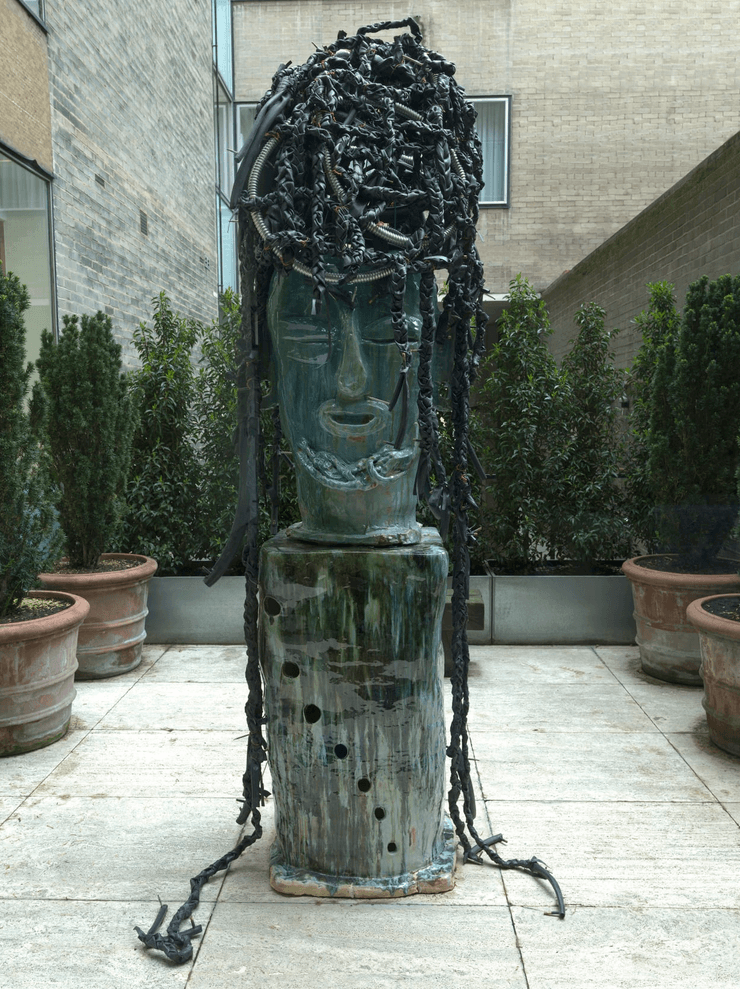
Namasole Wannyana, Mother of King Kimera from the Kuchu Royal Family of Buganda
2021



Describing her practice, Babirye explains: “Through the act of burning, nailing and assembling, I aim to address the realities of being gay in the context of Uganda and Africa in general. Recently, my working process has been fueled by a need to find a language to respond to the recent passing of the anti-homosexuality bill in Uganda. “You can be in prison if you’re even caught with a person talking about gay issues Gay in Uganda means the risk of life in prison” she explained in an interview in The Guardian.
The Guardian notes that:
There’s an irony Babirye relishes in showing her work in the UK. Before the British colonized Uganda in 1894, bringing Victorian Christianity with them, no one cared about same-sex activity. Even King Mwanga II, who was ruling before the British protectorate, was bisexual. It’s tempting to think that Babirye’s work alludes to a pre-colonial, indigenous Ugandan sculptural tradition, but she says there isn’t one: “The only sculptures we have are just ceramic ware for cooking, or spears for fighting wars.” The masks, meanwhile, are a West African thing (Uganda is in the east) used in her work to nod to those friends forced to hide behind them, for fear of hostile exposure. “You’re always running, trying to be safe,” she says of her life being a lesbian in her home nation
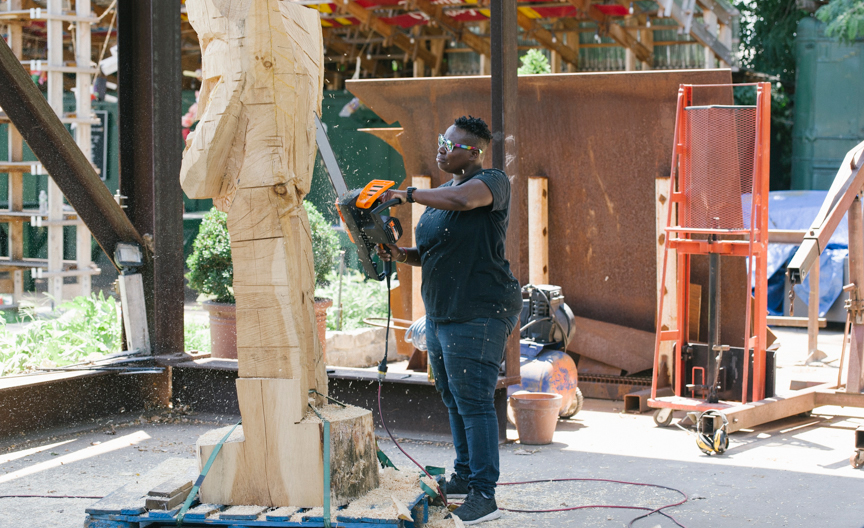
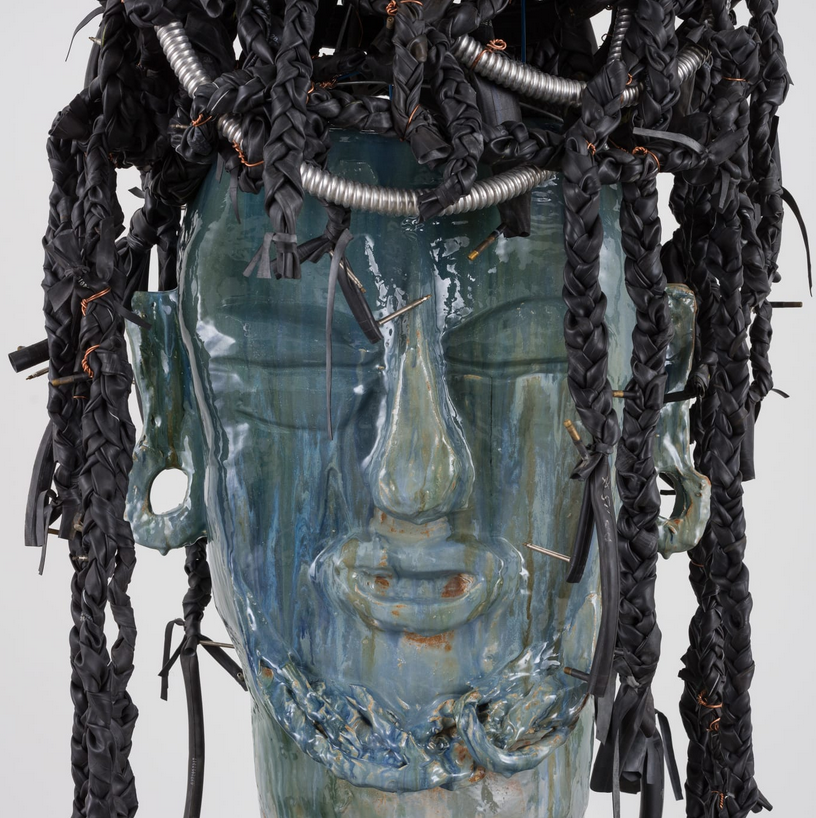
Add your valued opinion to this post.